
By John Helmer, Moscow
On what the Paris Agreement for climate change (COP21) should have decided last Saturday, no Russian business figure has been as outspoken as Oleg Deripaska (lead image), chief executive and control shareholder of the Russian aluminium monopoly, Rusal.
“Balderdash”, Deripaska said of the agreement terms during a whistlestop interview with a British newspaper in Paris. “We all know that countries submit [emission cuts] as a way to do nothing, to wait for the next election. They do not want to be criticised, they do not want to deal with the substantial issues.” Concretely, he added: “there is no other solution. For us engineers and managers who run companies, for the financial community, the only way [to reduce emissions] is to put in a global carbon tax. Seriously, it is carbon tax or die.”
In the 31-page text of the Paris Agreement, released late on Saturday, there is no carbon tax; not even a binding emission cut. Read the agreement in full here. For a handily indexed version, click to open.
Counting references, the Paris agreement mentions the general term “finance” a total of fifteen times. “Ambition” comes next with 12 references. Specific terms like “pay” and “cost” rate 4 mentions each; “budget”, 2; “target”, 2. “Tax” scores zero.
Coal, natural gas, and oil aren’t mentioned either. Carbon (5 mentions) is a better indicator of the negotiators’ pact, since cutting carbon emission volumes is, according to the warming theory of climate change, the key to reducing temperature growth. The agreement calls for “the important role of providing incentives for emission reduction activities, including tools such as domestic policies and carbon pricing.” But that’s the one and only line of the agreement where carbon and price have been mentioned together.
On the issue of what agreement the 195 conference parties have reached on the price to be paid for carbon pollution and climate control, the agreement is clear — no precise or uniform terms have been settled at all. Article 5 recommends a scheme of “results-based payment”. Article 9(3) suggests this should come from a “wide variety of sources, instruments, and channels… noting the significant role of public funds…” As for deciding how much of those public funds will be spent, there is also no agreement. “Each Party shall communicate a nationally determined contribution every five years in accordance with decision 1/CP.21 and any relevant decisions of the Conference of the Parties serving as the meeting of the Parties to the Paris Agreement and be informed by the outcomes of the global stocktake referred to in Article 14.” (Article 4.9) “All Parties should strive to formulate and communicate long-term low greenhouse gas emission development strategies, mindful of Article 2 taking into account their common but differentiated responsibilities and respective capabilities, in the light of different national circumstances.” (Article 4.19).
It turns out the negotiators were able to strike clearer agreement on the rights of pre-operative shemales and teenagers. They couldn’t agree on the undesirability of climate-heating war between the US, the NATO alliance and the Turks against Russia. “Acknowledging that climate change is a common concern of humankind, Parties should, when taking action to address climate change, respect, promote and consider their respective obligations on human rights, the right to health, the rights of indigenous peoples, local communities, migrants, children, persons with disabilities and people in vulnerable situations and the right to development, as well as gender equality, empowerment of women and intergenerational equity.”
Russia ranks fifth on the world table of carbon dioxide emitters, trailing well behind China, US, the European Union (EU), and India. Unlike them, and also beating Japan, Germany, South Korea, Brazil, and Canada, Russia has done relatively more to cut its emissions since 1990. President Vladimir Putin made a point of the comparison when he told the Paris conference on November 30: “from 1991 to 2012, not only did Russia have no increase in greenhouse gas emissions; it substantially reduced its emissions over this time. This has saved the equivalent of around 40 billion tonnes of carbon dioxide gas from entering the atmosphere. For comparison, let me tell you, colleagues, that total emissions by all countries in 2012 came to 46 billion tonnes. In other words, Russia’s efforts have made it possible to slow down global warming by nearly a year.”

Source: http://edgar.jrc.ec.europa.eu/overview.php?v=CO2ts1990-2013
The Russian position in the climate change negotiations can be followed in detail here. Understanding exactly what the Russian position has been in the run-up to the December 12 agreement is difficult because the lead negotiator, Alexander Bedritsky, a Kremlin ranked plenipotentiary, says as little as possible, and then only on scripted occasions. He doesn’t answer press questions or give impromptu press conferences. The Kremlin has also played down his significance. Putin didn’t call him in for a ceremonial send-off to Paris.
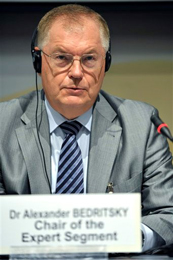 It was a year ago, when the Kremlin website last reported Bedritsky (right) was alive. That was for a speech he gave at Conference of Parties (COP20) at Lima. Then he said he was in favour of loose market incentives, not strict government obligations. “Russia is interested in developing emissions reduction
It was a year ago, when the Kremlin website last reported Bedritsky (right) was alive. That was for a speech he gave at Conference of Parties (COP20) at Lima. Then he said he was in favour of loose market incentives, not strict government obligations. “Russia is interested in developing emissions reduction
incentives and in exchanging of practices in this sphere. We believe that before signing the new climate agreement, state parties should decide on market mechanisms which will help countries to meet their commitments for the post-2020 period. However, forcing Russian companies to participate in carbon-trading schemes created by separate groups of countries is something we cannot accept.”
In Paris Bedritsky and Russia got what they bargained for. The term “trading” was kept out of the agreement text. Also, the use of the term “contribution” in the wording of Article 4 of the pact was a Russian negotiating objective, instead of the term “commitments”, which the EU representatives had wanted. Even “contribution” has been carefully hedged with the phrase, “intended nationally determined contributions.” Bedritsky’s term for this phrase was the “bottom-up approach”: “regarding possible commitments for the post-2020 period, we favour the ‘bottom-up’ approach, which means that countries should determine their commitments themselves.”
Expert Russian assessments explain that Bedritsky hasn’t been necessary – Russia will be able to achieve its emission reduction targets to the year 2030 by letting the trees do the talking. “Russia’s target also accounts for carbon dioxide absorption by the country’s boreal forests,” reported the Russian International Affairs Council on November 27. “It is enough for Russia to simply manage its forests to reduce its emissions by 500 million tonnes of CO2 yearly, as this figure already represents the absorption capacity of its natural carbon sink.”
There was always the risk in the Paris negotiations that contributions, bottom-up or laid-back, might be overtaken by commitments, obligations, and requirements. To help make sure this wouldn’t happen, one of the Russian lobbyists for COP21, Mikhail Yulkin, has been on guard to ensure that higher costs for Russia’s principal commercial interests wouldn’t be imposed. “There is an understandable desire not to incur unnecessarily stringent obligations,” Yulkin said last year.
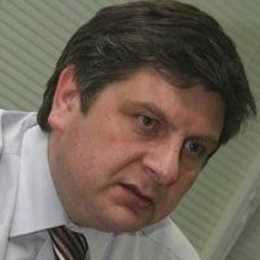 Yulkin (right) , one of the leading Russian analysts of climate change, is head of the Climate Change Working Group of the Moscow business lobby, Russian Union of Industrialists and Entrepreneurs (RSPP). He also sits on the government’s commission on climate change which includes ministries and public sector representatives. He is not a direct critic of Bedritsky; he acknowledges his hands are being tied by corporate resistance to costs as the economy is pressured by falling commodity prices and war sanctions.
Yulkin (right) , one of the leading Russian analysts of climate change, is head of the Climate Change Working Group of the Moscow business lobby, Russian Union of Industrialists and Entrepreneurs (RSPP). He also sits on the government’s commission on climate change which includes ministries and public sector representatives. He is not a direct critic of Bedritsky; he acknowledges his hands are being tied by corporate resistance to costs as the economy is pressured by falling commodity prices and war sanctions.
Nor is Yulkin critical of Deripaska’s attack on the Paris agreement. “As a true businessman, Mr. Deripaska probably believes that as long as there’s no real money involved, there is no serious progress. So he stands up for how GHG [greenhouse gas] emissions should be assessed, not only in tonnes of CO2 equivalent, but in hard currency (US dollars); that’s to say, they have a real value, and a price equal for all market players, regardless of country of residence. For sure, Mr Deripaska is not the first to express that view. But Mr. Deripaska, it seems, goes further to say that all climate agreements amount to nonsense (balderdash), and do not deserve attention, if there are no agreements on payment for GHG emissions through a carbon tax. Before Mr. Deripaska no one has expressed this idea, although it isn’t that noone had thought of it.”
Deripaska’s Rusal says it is already meeting the Russian emissions target. Its latest sustainability report claims the company “has set a goal for UC RUSAL enterprises to meet by 2020 atmospheric emission standards established by the laws of countries where the enterprises operate.” That means that in Guinea, where pollution from the Friguia alumina refinery has drawn nationwide protests, the emission target will be as low as the government in Conakry can be persuaded to put up with. For more on the conflict over Friguia, read this.
In aggregate, Rusal says, “total emissions of pollutants into the atmosphere in 2014 fell by 9% compared to the previous period, and equalled 322 thousand tonnes. In addition to the presence in the reporting year, as in 2013, of mothballed capacities, the reduction in this indicator was also due to the performance of transitional air protection measures.”
RUSAL EMISSIONS BY LINE OF PRODUCTION (INCL CARBON MONOXIDE), 2012-14
‘000 tonnes
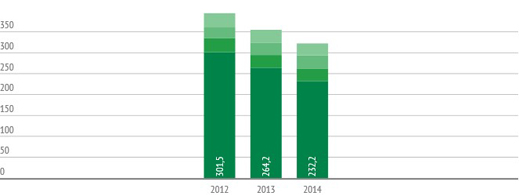
KEY: Dark green = aluminium; mid-green = alumina; light-green = heat, electricity generation; grey = other
Source: http://sr.rusal.com/environmental-protection/emissions-into-the-atmosphere.php
The public record of Rusal’s environmental compliance is less green. In Krasnoyarsk krai, the Achinsk alumina refinery has been fined last year and again this year by the local prosecutor after it was found to have inflicted significant damage through the release of polluted water. Studies of environmental pollution and ill-health due to air and water emissions have revealed that cities where Rusal operates aluminium smelters — Novokuznetsk, Bratsk, and Irkutsk – score in the top-10 of the country’s urban poison index. The Bratsk smelter, in Irkutsk region, is reportedly the principal source of air pollution in the region, at a level government inspectors have declared publicly to be “critical”. At Achinsk (below), local press reports claim Rusal is refusing to pay the fines of almost Rb480 million; it is threatening instead to close the refinery and turn its workers out of their jobs.
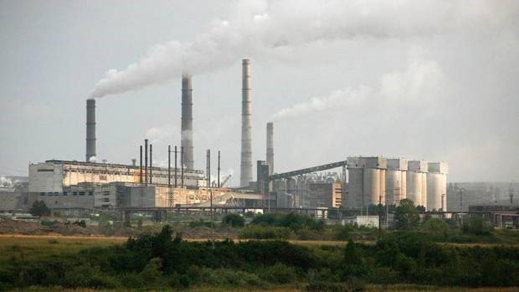
If Rusal aims to meet the national emission standard by shutting down or threatening to shut down plants, Deripaska explained on his website he is willing to reconsider if the Kremlin will finance him with state budget money. “Carbon pricing should replace emission trading that doesn’t motivate growing economies to cut the hazardous emissions,” Deripaska wrote last week. “I think $15 per metric ton of emitted carbon is a reasonable price.”
But the price will only be reasonable Deripaska added, if it is offset by state spending. “In order to make a shift towards ‘green’ global economy, a joint cooperation between governments, private sector and civil society on both national and international levels is required. Governments could support introduction of ‘green’ technologies through a set of specific measures such as: reduction or cancellation of customs tariffs for low carbon or energy efficient equipment and technologies; tax preferences for companies introducing ‘green’ technologies; and creation of a favorable investment environment through bank loans at reduced rates for introduction of ‘green’ technologies.”






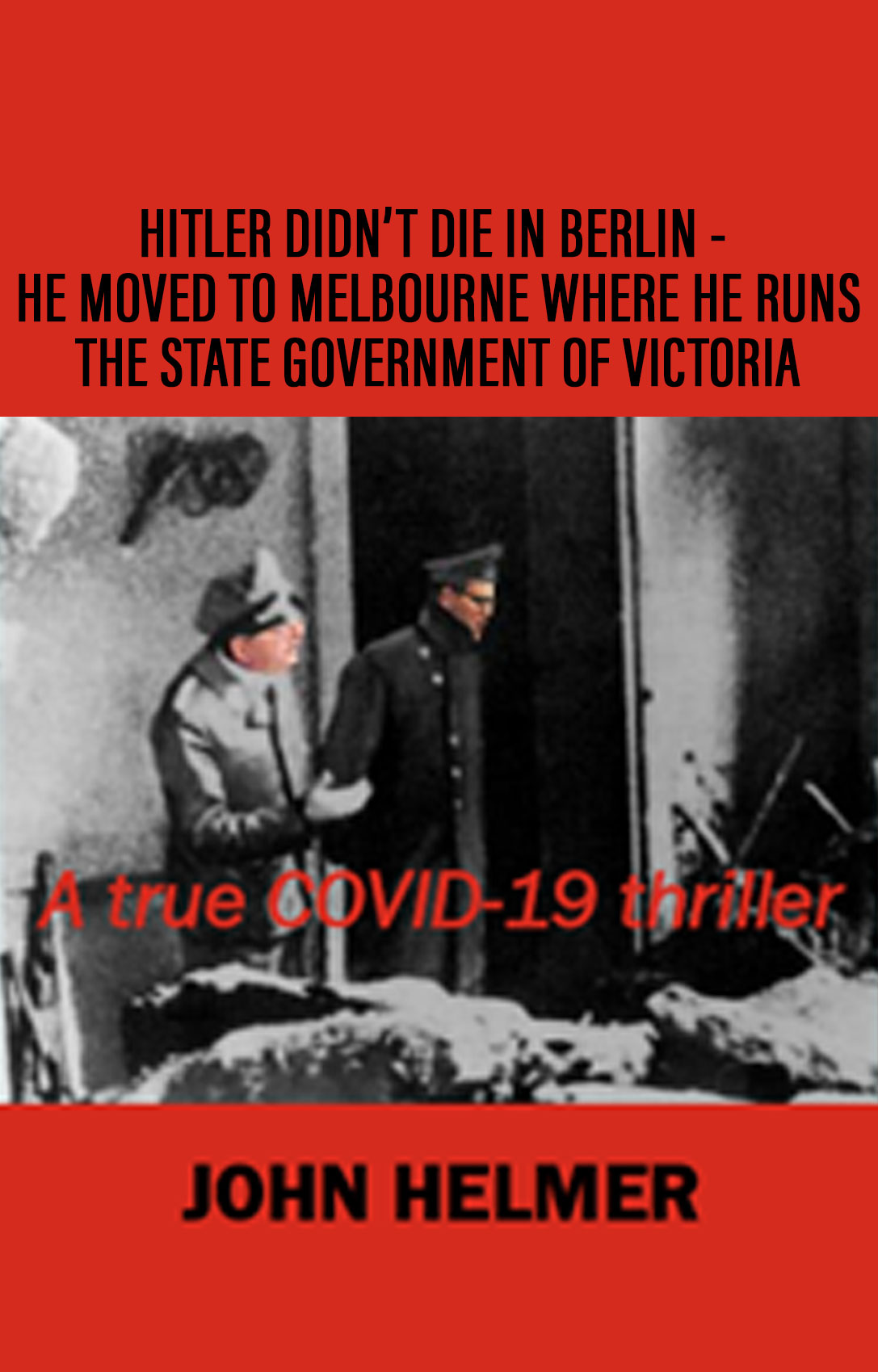




Leave a Reply